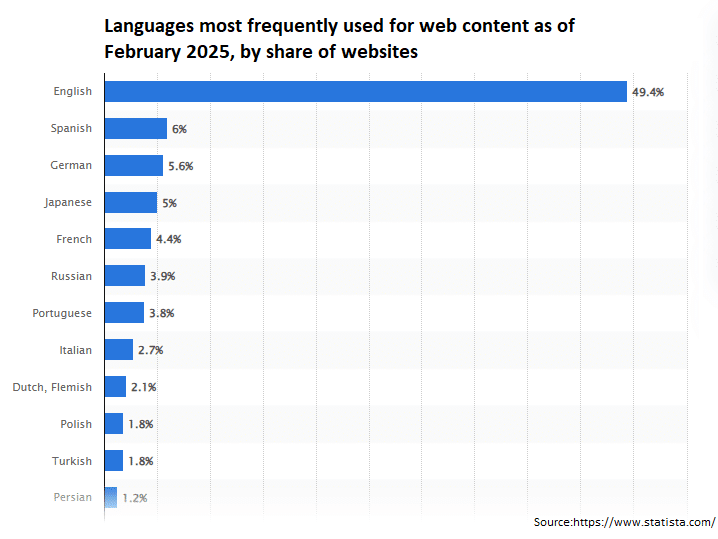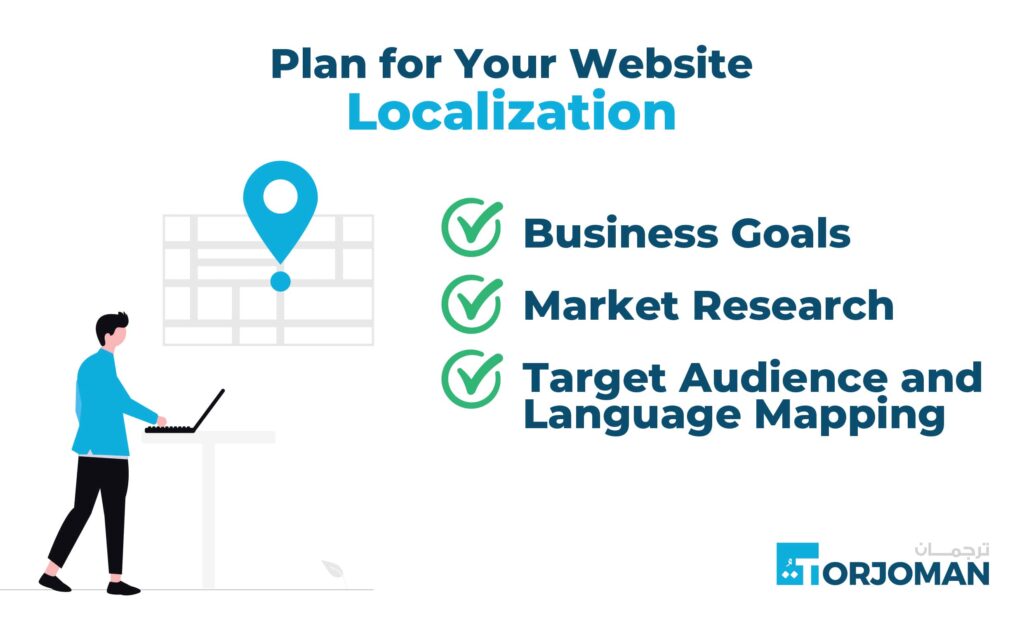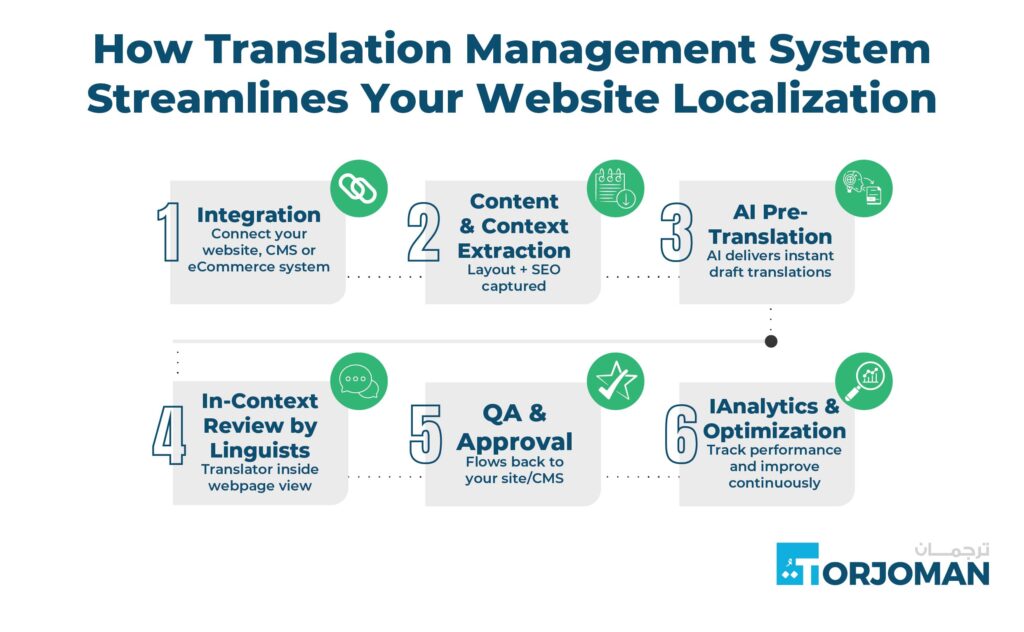Have a Big Project?
Big numbers, lots of documents and multiple translations?
Our top performing teams deliver unmatched quality on time for you
to hit your business goals.

Your website localization demands a well-thought-out localization strategy that addresses the cultural, linguistic, technical, and experiential needs of your audience. In fact, website localization best practices are what set global-ready brands apart from the rest.
Let’s walk through five proven, data-backed website localization best practices and strategies that can make or break your website localization project—helping you increase engagement, boost conversions, and build long-term trust in international markets.
In 2025, the global economy demands localized digital experiences.
A staggering only 49.4% of websites use English as their primary language, yet English speakers account for just about 19% of the world’s population. That disconnect means nearly half the web speaks to a global audience that just doesn’t speak back.

Consider consumer behavior:
The opportunity is enormous.
Localization is about reach, but it’s also about results and ROI. Companies that invest in translation are 1.5× more likely to see year-over-year revenue growth.
In short, website localization can be a growth engine. By speaking your customers’ local language, reflecting their culture, and tailoring every touchpoint to their expectations, you’re building trust, credibility, and conversion power.
However, knowing the “why” is one thing, but putting localization into action can feel overwhelming. That’s why we’ve pulled together five website localization best practices to help you simplify the process and make website localization less confusing, more strategic, and far more impactful.

Website localization starts with a strategy to map out why and where you’re localizing.
Before you even begin translating, you need to internationalize your website. As one of the most essential website localization best practices, internationalization—often shortened to i18n—is the process of designing and structuring your site so it can adapt to any language, region, and cultural format without requiring major code changes later. In essence, it’s building a flexible, scalable architecture that lays the groundwork for localization.
What i18n Means in Practice:
Without internationalization, localization becomes time-consuming, error-prone, and expensive—requiring code rewrites or hacks every time you add a new language. But with i18n in place:
We can not not talk about technology when it comes to localization. One of the website localization best practices is the integration between technology and humans.
When you think about localizing a website, it’s easy to imagine rows of translators working line by line. In reality, today’s process is far more sophisticated—and a lot faster—thanks to AI, automation, and specialized tools. But technology alone doesn’t solve everything. The real advantage comes from how you integrate these tools with human expertise.
Let’s start with Translation Management Systems (TMS).
Think of a TMS as the central hub of your localization efforts. It stores every translation your business has ever done, making it accessible to your entire team worldwide. More importantly, it doesn’t just sit there as a static database—it integrates with your CMS, CRM, or e-commerce platforms to automate repetitive tasks that normally eat up time, such as uploading new product descriptions or syncing updates across languages.
What makes a TMS even more powerful is its ability to remove friction from collaboration. Translators, developers, marketers, and reviewers can all leave notes, comments, screenshots, and context in the same space. Instead of long email threads or endless revisions, teams work together in real time.
Some systems even allow in-context translation directly on the page. This means translators can see how their work looks on the actual website before it goes live—cutting out guesswork, saving developer hours, and accelerating launches.

Then comes Machine Translation (MT).
Website localization best practices require that you provide accurate translations of your website. But in fast-paced localization environments, accuracy won’t be enough. Speed comes hand in hand.
MT has moved way beyond the clunky, robotic outputs of a decade ago. Today’s engines understand context, grammar, and natural phrasing with surprising accuracy. But here’s the golden rule: MT should never be “fire-and-forget.” For marketing copy, customer support, or legal content, a human linguist is still essential to refine, adapt, and make sure the tone resonates with your audience.
In practice, businesses often use MT for large-scale, low-risk content (like internal docs or FAQs), and rely on human translators for customer-facing assets.
True website localization best practices go far beyond translated content. You must translate and localize every user-facing element, including:
Each of these is critical to making users feel understood—and willing to engage.

Website localization best practices address testing as a core element of your multilingual websites. To ensure your website performs equally well across all markets, rigorous localization testing is essential.
Testing
Continuous Localization
Websites are rarely static. Content is updated weekly, sometimes daily—new product pages, seasonal promotions, support articles, or blog posts.
Traditional localization, where content is translated in bulk and released in large updates, can’t keep up with that pace. This is why continuous or agile localization has become such a cornerstone of website localization best practices.
The idea is simple: localization follows the same rhythm as your development and content cycles. Instead of waiting for an entire site or campaign to be “finished” before translation begins, updates are translated, reviewed, and deployed in smaller, faster sprints.
The benefits are significant. Continuous localization
In practice, this means launching a new product in multiple markets on the same day instead of weeks apart, which directly impacts revenue and customer trust.
This will require the right technology backbone. A TMS that plugs directly into your CMS, code repository, or design tools is key. This way, new content is automatically detected and queued for translation. This keeps localization in lockstep with your content and development cycles.
Conclusion
Effective website localization is more than a checkbox—it’s a strategic asset. From technical readiness to professional translators, from tailored UX to SEO, these website localization best practices help internationalize your website and earn user trust.
Whether you’re just starting your website localization process or looking to optimize existing localization efforts, the right strategy can unlock massive growth in international markets.
Ready to translate and localize your website the right way? Partner with experts who understand the tech, the culture, and the conversion science behind successful website localization.
Looking for a trusted partner to localize your website and connect with global audiences? Torjoman offers end-to-end website localization and translation services tailored to your industry and target markets. With a global network of native speakers, expert human translators, and cutting-edge localization technology, Torjoman helps you:
Whether you’re targeting one region or launching into dozens of international markets, Torjoman’s team can handle every phase of your localization project—from initial strategy to final QA.
Get started with Torjoman today and take your digital presence global with confidence.
Big numbers, lots of documents and multiple translations?
Our top performing teams deliver unmatched quality on time for you
to hit your business goals.
Ready to burst your borders and need work done quickly?
Order Now! To get an instant assessment and quote.
Don’t wait, we’re ready.
SAVE TIME & MONEY!
Order from our mobile app now